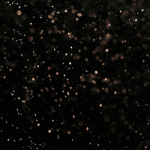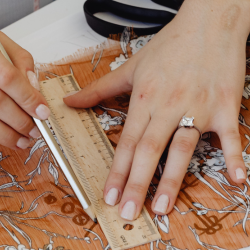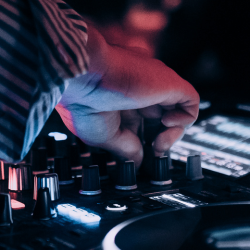Delving into the captivating world of animation, understanding its rich history is paramount. The history of animation traces back through an incredible evolution, from the early days of hand-drawn sketches to the advent of CGI and beyond, showcasing its impact on entertainment, art, and technology.
In this blog, we’ll explore the vast landscape of animation. From the foundational aspects like types and principles to unlocking the keys to mastery, we’ll journey through the fascinating history of animation, uncovering pivotal moments that shaped this mesmerizing art form.
Table of content
- History of Animation
- 1900 – The Enchanted Drawing
- 1906 – Humorous Phases of Funny Faces
- 1908 – Fantasmagorie
- 1914 – Gertie the Dinosaur
- 1919 – Felix the Cat
- 1922 – Steamboat Willie
- 1930 – Dizzy Dishes
- 1932 – Flowers and Trees
- 1933 – King Kong
- 1937 – Snow White and the Seven Dwarfs
- 1960 – The Flintstones
- 1961 – One Hundred and One Dalmatians
- 1985 – The Adventures of Mark Twain
- 1988 – Who Framed Roger Rabbit
- 1993 – Jurassic Park
- 1995 – Toy Story
- 2002 – Lord of the Rings: The Two Towers
- 2009 – Avatar
- 2012 – ParaNorman
- Animation Devices Used Earlier
- First Animated Movie
- How to Be a Master in Animation?
- Conclusion
- FAQs
History of Animation
Animation is the art of bringing still images or inanimate objects to life through motion pictures. By manipulating illustrations or objects sequentially, animation creates the illusion of movement, crafting narratives that captivate audiences. Some trace its roots back to ancient Grecian pottery, where scenes depicted movement and expressions akin to a comic strip.
The history of animation predates traditional filmmaking, with early pioneers devising methods to create moving images without modern recording technology. J. Stuart Blackton’s The Enchanted Drawing (1900) marked the first animated sequence captured on standard film. Émile Cohl’s Fantasmagorie (1908) presented one of the earliest cartoons, followed by Winsor McCay’s Gertie the Dinosaur in 1914, which introduced pivotal techniques like keyframing and animation loops. Disney’s Steamboat Willie (1928) was a landmark moment, pioneering synchronized sound in animated films, popularizing Mickey Mouse, and revolutionizing sound usage in the genre.
1900 – The Enchanted Drawing
Stuart Blackton’s film blended live-action and animation, showing a drawing that appeared to come alive.
1906 – Humorous Phases of Funny Faces
Blackton’s chalkboard animation is one of the earliest known animated films, using simple drawings to create humor.
1908 – Fantasmagoria
Émile Cohl’s hand-drawn film in France introduced surreal, morphing visuals, a pioneering effort in animation.
1914 – Gertie the Dinosaur
Winsor McCay’s interactive cartoon featured a charming dinosaur, setting a new standard for character animation.
1919 – Felix the Cat
Otto Messmer’s creation became one of the first animated characters to gain widespread popularity.
1922 – Steamboat Willie
Disney’s Mickey Mouse debuted in this film, notable for its synchronized sound, a major milestone.
1930 – Dizzy Dishes
This short, introduced Betty Boop, a character who became a cartoon icon.
1932 – Flowers and Trees
Disney’s first full-color cartoon, using Technicolor, won an Academy Award for its vibrant visuals.
1933 – King Kong
Stop-motion animation brought the iconic giant ape to life, showcasing the power of practical effects.
1937 – Snow White and the Seven Dwarfs
Disney’s first feature-length animated film redefined the industry with its storytelling and artistry.
1960 – The Flintstones
The first prime-time animated TV series brought cartoons to a broader, adult audience.
1961 – One Hundred and One Dalmatians
Disney’s use of xerography streamlined animation, allowing for complex scenes with many characters.
1985 – The Adventures of Mark Twain
Claymation techniques highlighted the creative potential of stop-motion animation.
1988 – Who Framed Roger Rabbit
This film seamlessly blended live-action and animation, creating a groundbreaking cinematic experience.
1993 – Jurassic Park
CGI dinosaurs marked a turning point, showcasing the potential of computer-generated effects.
1995 – Toy Story
Pixar’s fully CGI feature film set a new benchmark for animation with its innovative visuals.
2002 – Lord of the Rings: The Two Towers
The CGI character Gollum pushed the boundaries of realistic animated characters.
2009 – Avatar
James Cameron’s film advanced 3D animation and motion capture, creating a visually stunning world.
2012 – ParaNorman
Modern stop-motion techniques delivered intricate storytelling and detailed visuals.
Note: The above information has been taken from – https://www.fudgeanimation.com/journal/the-evolution-of-animation-a-timeline
First Animated Movie
Émile Cohl’s Fantasmagorie (1908) holds the title of the first animated film. Its hand-drawn, abstract sequences captivated early audiences and laid the foundation for animation as an art form.
Animation Devices Used Earlier
Before digital tools, animators used creative devices to bring images to life:
- Zoetrope: A spinning drum with images viewed through slits, creating looping motion.
- Praxinoscope: An enhanced zoetrope using mirrors for smoother visuals.
- Phenakistoscope: A disc with sequential images spun to simulate movement.
- Flipbooks: Simple books with drawings flipped to create basic animations.
- Multiplane Camera: Disney’s invention added depth by layering artwork, used in films like Snow White.
Animation Courses Available in 2025
Here’s a list of animation courses you might consider:
- AAFT Online’s Diploma in 3D Animation and Visual Effects
- Coursera’s Animation and CGI Motion Specialization
- School of Motion’s Animation Bootcamp
- iAnimate – Online Animation School
- CG Spectrum’s Animation Course
- Pluralsight’s Animation Training and Tutorials
- Udemy’s Complete Blender Creator: Learn 3D Modelling for Beginners
- Animschool – Online Animation School
These courses offer a variety of learning experiences, catering to different levels of expertise and covering various aspects of animation.
How to Be a Master in Animation?
Mastering animation involves a blend of dedication, practice, and continual learning. Here are steps to excel:
- Foundation: Start with the basics. Learn the principles of animation, understand software tools, and study traditional art forms by doing a course in animation.
- Practice Regularly: Animation is about honing skills. Practice consistently, experiment with different techniques, and strive for improvement.
- Get Feedback: Share your work and seek feedback. Constructive criticism helps identify areas for growth.
- Learn Software: Master popular animation software like Adobe Animate, Toon Boom Harmony, or Blender. Understanding tools expands creative possibilities.
- Explore Specialization: Animation has diverse fields. Explore areas like character animation, motion graphics, or VFX to find your niche.
- Stay Updated: Technology evolves rapidly. Keep learning new techniques, follow industry trends, and attend workshops or courses.
- Build a Portfolio: Showcase your best work in a portfolio. A strong portfolio is crucial for job applications or freelance opportunities.
- Network: Connect with fellow animators, join forums, attend industry events, and build relationships. Networking opens doors to collaborations and opportunities.
- Stay Inspired: Draw inspiration from various sources—movies, art, nature—to keep your creativity flowing.
Remember, becoming a master animator takes time and persistence. Stay passionate, open to learning, and embrace challenges as stepping stones to growth.
Animation Devices Used Earlier
Here are some of the animation devices used earlier:
- Magic lantern: An early image projector using a light source to project images from glass slides onto a screen.
- Thaumatrope: A toy with two sides that, when twirled, creates a combined image from both sides, showing an illusion of movement.
- Phenakistoscope: A spinning disc with sequential images; when viewed through slits and spun, it creates the illusion of motion.
- Zoetrope: A cylindrical device with slots for viewing still images inside; when spun, it gives the impression of animation.
- Kineograph: A flipbook-style device allowing users to view sequential images in rapid succession, creating movement.
- Praxinoscope: Similar to a zoetrope, using mirrors to reflect images placed around the inside of a spinning cylinder, creating animated sequences.
First Animated Movie
Émile Reynaud’s “Pauvre Pierrot” (1892) utilized a longer image roll for the praxinoscope, allowing for an extended viewing experience. It’s often cited as the earliest animated film due to Reynaud’s hand-painted roll of 500 individual images, although film historians debate this claim. Some argue that Émile Cohl’s “Fantasmagorie” (1908) is the first true animated movie, produced using traditional animation techniques.
J. Stuart Blackton’s “Humorous Phases of Funny Faces” (1906) is also considered by some as the animation industry’s pioneering film. Blackton employed stop-motion animation, showcasing a sequence of animated characters changing movements over its three-minute duration. Notably, it was the first animated film recorded on standard picture film, marking a technical milestone in the history of animation.
Conclusion
As we traverse the spectrum of animation’s evolution—from the enchanting origins of the magic lantern to the revolutionary films of Disney and beyond—learning about the history of animation enriches our understanding of this mesmerizing art form. These courses are not just gateways to acquire skill but also windows into the captivating journey that animation has traveled. Embrace these educational avenues to delve deeper into animation’s past, present, and the limitless creative possibilities it promises in the future.
FAQs
What was the first animated film ever created?
Fantasmagoria (1908) by Émile Cohl is considered the first animated film, featuring innovative hand-drawn sequences.
How has animation evolved over the decades?
From hand-drawn shorts to CGI blockbusters, animation has grown through technological advances, sound integration, and storytelling sophistication.
Who are some pioneers in the history of animation?
Émile Cohl, Winsor McCay, Walt Disney, Otto Messmer, and John Lasseter were instrumental in advancing animation techniques and popularity.
When did 3D animation first become popular?
3D animation surged with Toy Story (1995), Pixar’s groundbreaking fully CGI film that captivated global audiences.
























